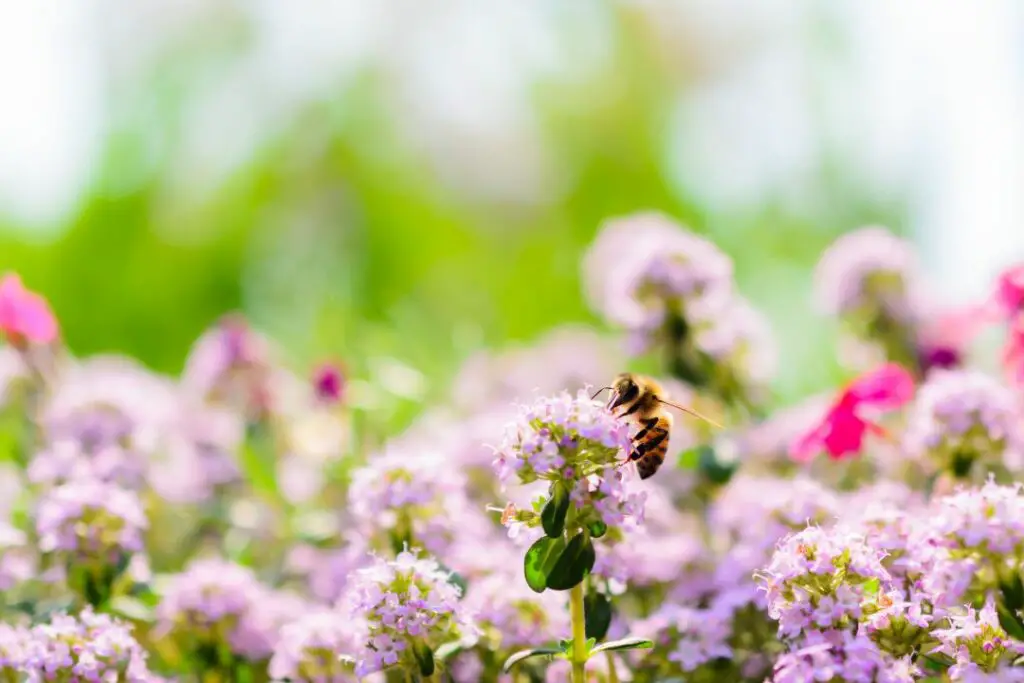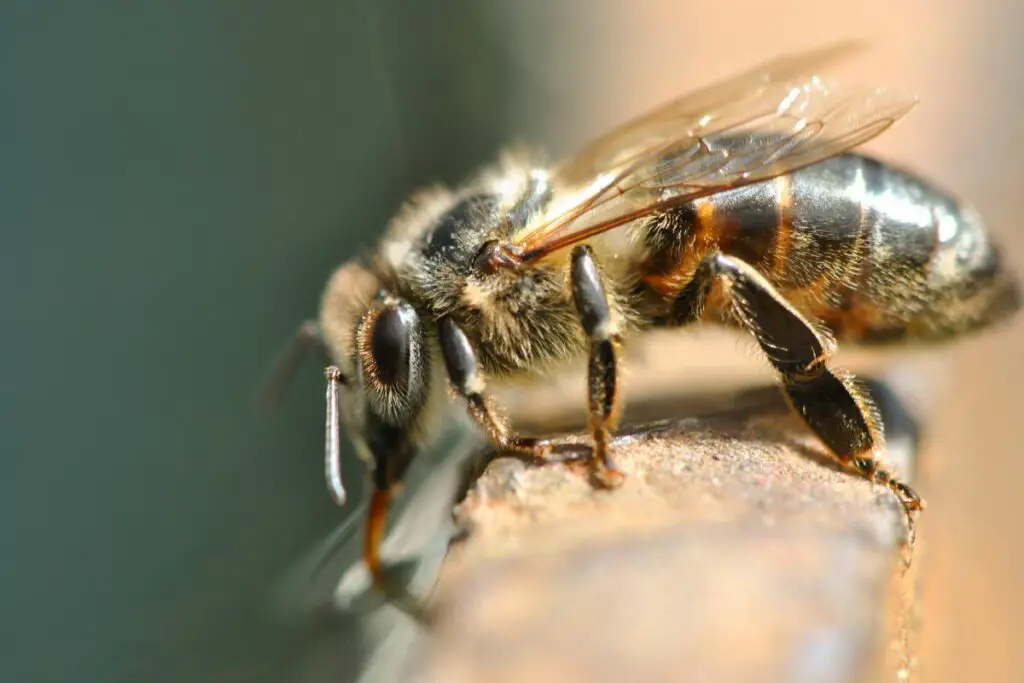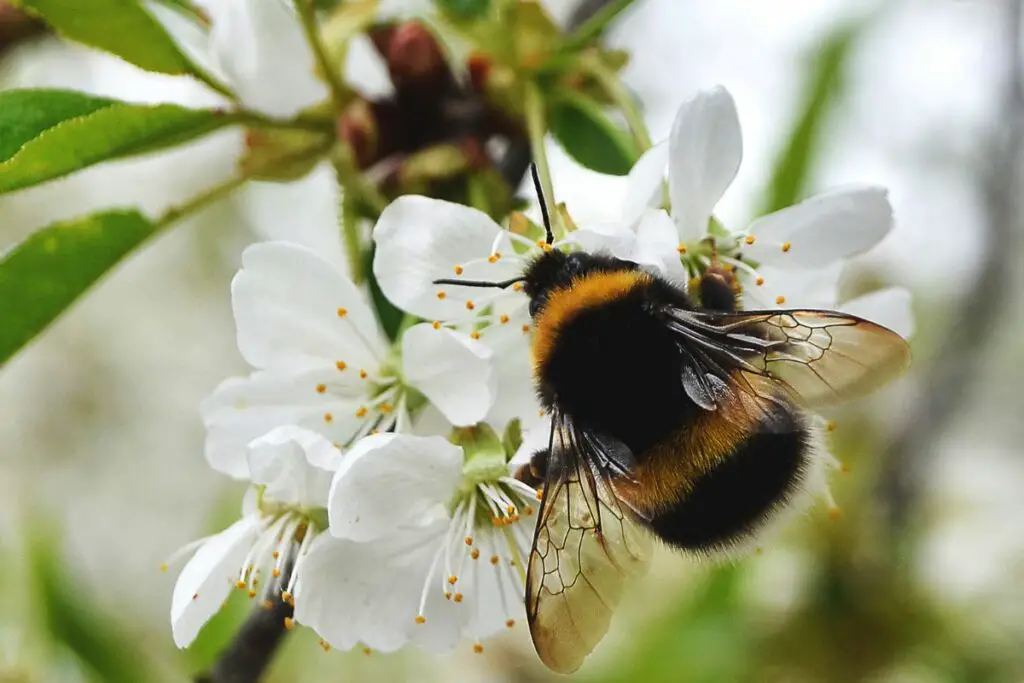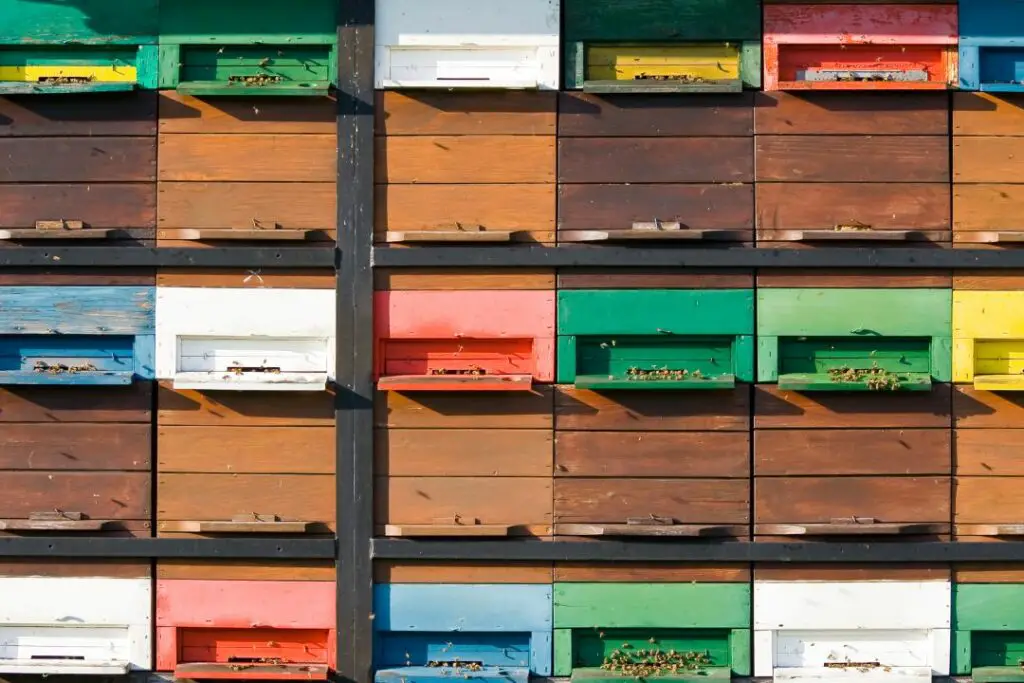Last updated on September 20th, 2023 at 12:06 pm
Bees spend their days busily buzzing from flower to flower, collecting resources to return to the nest or hive. They use various techniques to quickly identify potential sources of pollen and nectar, land and extract the precious prize.
Regarding flowers and bees, not all flowers are equal; some will contain significantly more forage, while others are much easier to access for visiting bees. To create a bee-friendly garden, offering a range of plants and flowers that share the above characteristics is essential.
Check out our guide on making a bee-friendly garden for more tips to encourage bees in your garden or wild area.
We’ve created a list of 8 bee-friendly flowers for your UK garden so you can create an oasis of pollen and nectar-rich resources for visiting bees.
Lavender
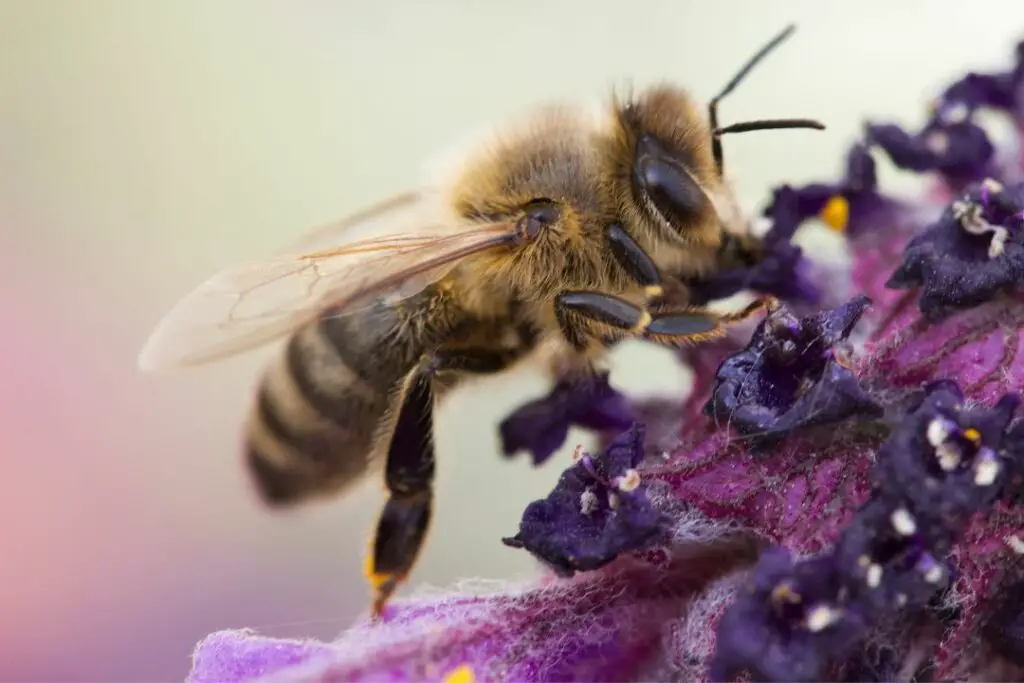
Lavender acts as a magnet for bees in your garden. This beautiful, fragrant plant offers both nectar and pollen in abundance.
You can grow English lavender, French lavender, or any other hybrids. All are suitable forage sources and provide the nutrition needed for optimal bee health.
Researchers at the University of Sussex identified that lavender is more popular with species of bumblebees than honeybees. The tubular nature of the flowers lends itself to the bumblebee’s longer tounges, which make accessing the nectar and pollen easier. You can read the full research article here.
Bee Balm
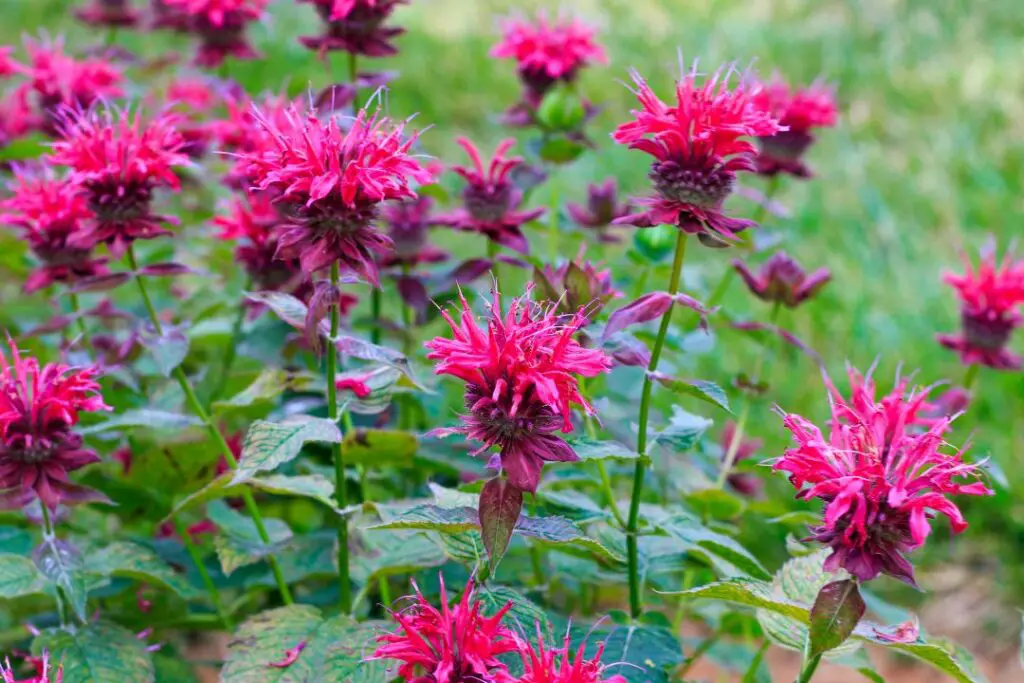
Bee Balm, Latin name Monarda and often referred to as ‘bergamot’ provides a great resource for bees foraging in your garden. The tubular flowers produced by this plant are rich in nectar.
This plant blooms in late summer, producing beautiful pink and purple petals. Alongside its benefits to bees, it can also be used in natural medicine for its antiseptic qualities.
The extended tubular flowers tend to lend themselves to bumblebees and their longer tounges, which are ideal for collecting nectar right at the centre of the flower.
Sedum
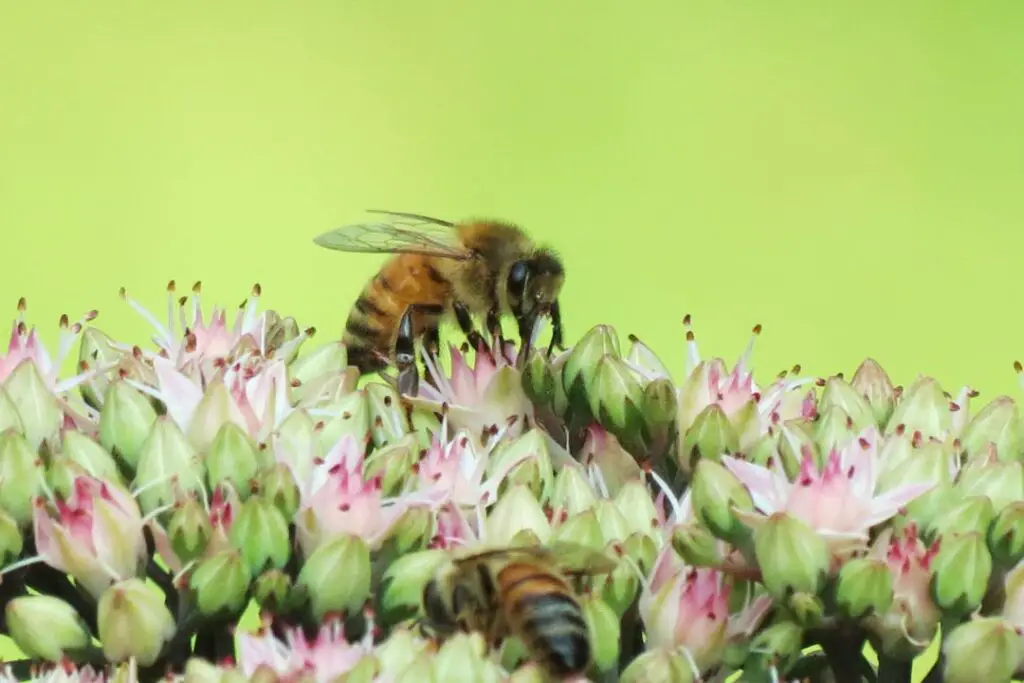
Sedum is a fantastic choice of flower to attract bees to your garden or wild area. These beautifully scented flowers bloom very late in the season and can help you provide resources for as much of the year as possible.
Sedum flowers are easily accessible to honeybees with their shorter tounges and are very sturdy, making them great for gardeners who don’t have much time to maintain their plants.
The video below shows some honeybees taking advantage of the myriad of lowers produced by the Sedum plant.
Winter honeysuckle
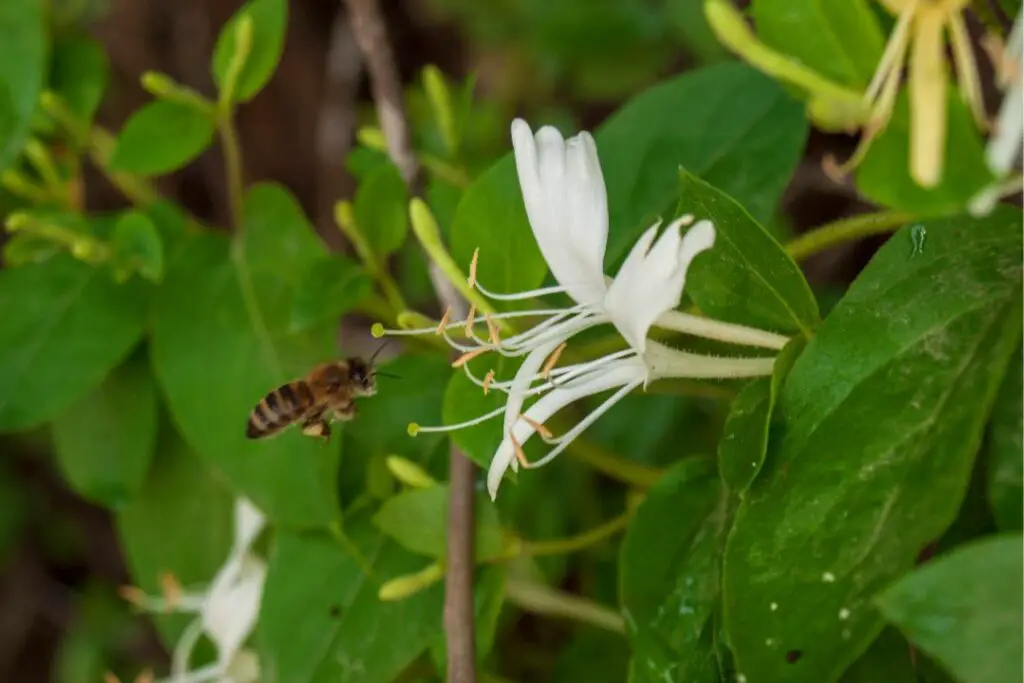
Winter flowering honeysuckle provides sweet-smelling flowers with beautiful white petals that are perfect for bees and look great in your garden or wild area.
Winter honeysuckle can be left to grow into a stunning shrub or encouraged to hug and climb a wall or fence with some tying in.
As expected, this is a winter-flowering shrub and will help to provide suitable resources for bees throughout the sparse colder months in the UK.
Winter Clematis
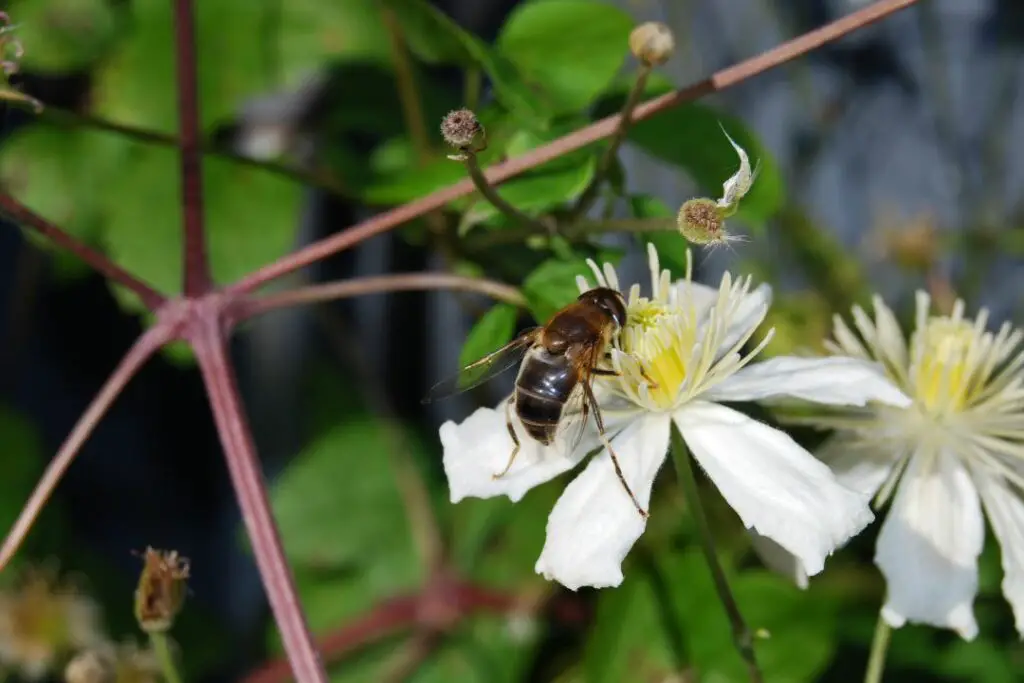
Winter-flowering clematis, Latin name Clematis cirrhosa are adept climbers. This sturdy plant is very resistant and can be a great choice for a beginner or amateur gardener.
Try to plant this close to your home to enjoy its stunning scent. Much like Winter honeysuckle, this will provide a suitable forage source for bees and pollinators through the colder months.
Common Poppy

Poppies belong to the subfamily Papaveroideae of the family Papaveraceae. These plants are prolific across the UK and can be seen nationwide in gardens, meadows and wild spaces.
While poppies don’t produce nectar like many other plants, they are a fantastic pollen source and even help some species build their nests and raise their young.
The poppy mason bee uses the common poppy’s red petals to line its nest in preparation for young larvae.
Learn more about the fascinating life of mason bees.
Foxglove

Foxglove is a no-go for humans but a fantastic source of bee nutrition. The species has evolved to appeal to bees with longer tounges, like bumblebee and carder bee species.
The plant produces a beautiful combination of pink and purple tubular flowers that flower from June to September. The flower’s lower lip provides a perfect landing zone for bees to begin climbing inside the tubed flower.
This allows Foxgloves to reproduce as bees effectively transport pollen from flower to flower.
Forget Me Not
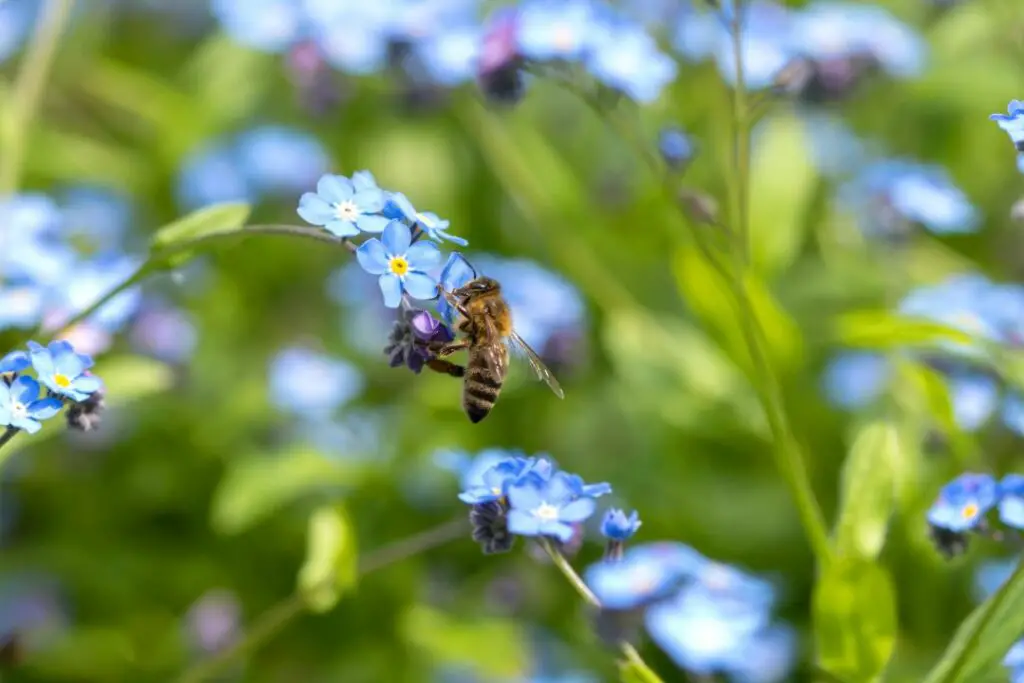
Forget me not’s are a favourite among bees and pollinators alike. They provide easy-to-access nectar and flowers from mid-spring through to early summer.
They’re a lovely shade of baby blue and make a great addition to any garden or wild space.
Which flowers draw the most bees?
Any flowers rich in nectar and pollen will attract bees. Lavender is undoubtedly the most popular species in my garden for bees of all varieties.
Which flower provides the best-tasting honey?
When bees forage primarily on the same plant, their honey is known as ‘monofloral’. Citrus trees and blackberries produce some of the best-tasting ‘monofloral’ honey available.
Are bee-friendly flowers good for butterflies as well?
Butterflies are not equipped with the same long tounges that bumblebees and carder bees do. If you want to attract butterflies to your garden, try to plant a range of shallow flowers easily accessed by butterflies.
Which plants are best for solitary bees?
Check out our guide on the best plants for solitary bees to find some species you can plant to encourage this often-overlooked caste of bees.
Which plants are best for mason bees?
Check out our guide on the best plants for mason bees to learn more.

